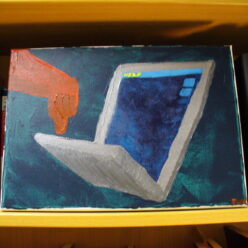TO: Prof. Ellis
FROM: Zeela Rafija
DATE: 03/03/2021
SUBJECT: 500-Word Summary of Article about the Cyber weapons
The following is a 500-word summary of a peer-reviewed article about the Cyber weapons which can be divided into intrusive and unintrusive capabilities. The authors discuss about the cyber weapons, Battels and suggest taking preparation for them. According to the authors, “By 2014, the Russians had honed unintrusive (but noisy and disruptive) cyber operations down to a finely tuned science” (Hare, F., & Diehl, W., 2019, p.7). Summary of “Noisy Operations on the Silent Battlefield” by Forrest Hare and William Diehl . The article tends to revolve around the advocacy for the preparation in opposition to the utilization of un-intrusive precision cyber weapons via improved integration, acquisition, and training. The article is grounded on Dipert’s classification. It involves an explanation of the two classes regarding offensive cyber capabilities. Moreover, it also consists of an illustration of specimens of such attacks along with their types. The authors of the article offer reviews of several preceding conflicts. Their reviews involve un-intrusive cyber weapons that were influential in operational terms. The authors argue that in the Dipert’s Nomenclature, the cyber arms can be classified into different categories. They regard the classification as un-intrusive and intrusive capabilities. The invasive cyber occurrences are more focused as compared to that of un-intrusive attacks. They also noted that IOT susceptibility to the UPCW attacks was shown during the month of October in the year 2016. Several examples regarding UPCW usage are demonstrated in the article. Such as the examples of its use in the local battles are provided by the article effectively. The cyber-criminal organizations have conducted several cyber-attacks in the modern conflicts that required already positioned feats. The authors have illustrated several examples in this regard. Such as the illustration of cyberwar by Russia and how it attacked the transport, financial and other systems of Ukraine is demonstrated in a detailed manner. The intrusive system requires the specific attacker to gain access. On the other hand, the un-intrusive system does not require any such access. Instead, in this system, the sensor or server etc. is degraded so that it cannot function properly for a certain amount of time. The authors offer several potential advantages associated with the employment and development of UPCW. They state that many benefits can be enjoyed by the cyber belligerent when assimilating UPCW with orthodox military processes, such as the capability of un-intrusive correctness cyber weapons is less momentary. It entails less strictly expert operators as compared to that of intrusive ones. Moreover, the cyber operator who employs UPCW can measure the efficiency of weapons more directly. The authors of the study present the challenges concerning consuming UPCW in a particular conflict. The challenges posed in the utilization of UPCW cannot be ignored. Apart from the remunerations of emerging and less cultured UPCW, the implications regarding cyber defender are apparent. Such as the defender must get ready for improved opponent utilization of UPCW in future conflicts along with the periods of increased tensions. The limitations of the article involve that it does not take any stable position on the amalgamation of EW and cyber operations. The authors further imply that EW capabilities have been and will be utilized by the opponents. These EW capabilities will be used to acquire assimilated cyber effects. The findings demonstrate that concerning the emphasis on the defense, the friendly actors should contemplate developing and investigating more improved options in association with UPCW; this will help in enhancing the features of UPCW. The article also demonstrates that UPCW should be studied more deeply along with cyber-EW occurrences.
Reference
Hare, F., & Diehl, W., (2019). Noisy Operations on the silent battlefield: The Cyber Defense Review,5(1), 153- 168. https://www.jstor.org/stable/26902668



